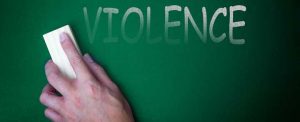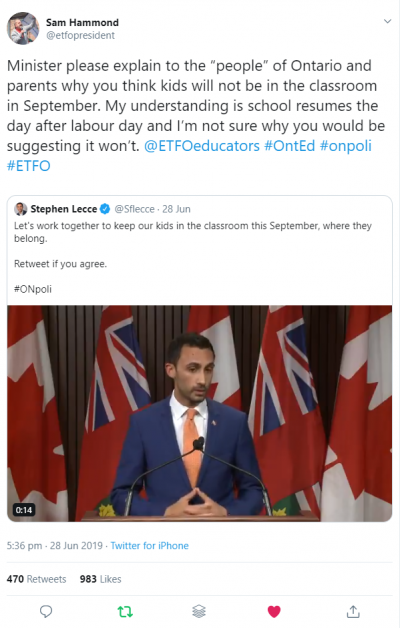Class Size and Composition Matters

As a teacher of 19 years, I’ve seen many changes to classroom composition. When I first started teaching, students with behaviour needs where either supported through Educational Assistants (EAs) or in separate contained classes. In addition, students with significant special education needs had additional supports and/or placement options for contained classroom settings. In 2015, I noticed a change in support for students with special education needs.
Much has changed in the last few years with the promotion of student integration and inclusion of special education students into mainstream classrooms. This integration policy further resulted in closures of contained classrooms thus limiting alternate options for students with significant learning and behaviour needs.
Classrooms today are not the classrooms of the past
Classrooms today are not put together like the classrooms of the past. Teachers face teaching students with significant learning delays such as having a student functioning at a grade 1 level in grade 6 classrooms. The gaps between student achievement levels and their placement in their grade level are widening. Teachers deal with a myriad of students’ special education and behaviour needs without additional support from EAs.
Lack of funding to identify and support students with special education needs
The widening gaps may be a result of the lack of funding for students to received psychological educational assessment/testing funded by the schools boards. When parents have resources such as insurance and/or money to cover the cost of this testing, they do not wait the years it takes for their child to get to the top of list. Instead, they pay for the assessment, getting their child tested in a private organization. I had my son tested privately as I was fortunate to be able to cover this cost. This put students from lower socio-economic areas at a higher risk of getting the support they need to be academically successful.
In their annual survey of Ontario principals, The People for Education noted since 2014, “the Ministry has maintained the overall level of funding for special education, but has changed how funding is distributed among boards. The goal was to make the funding more responsive to boards’ and students’ needs. These changes have resulted in some boards getting more funding, while others receive less. Comments from schools indicate that the impact of these changes is being felt on the ground.” People for Education, 2017.
The People of Education further state “Based on available resources, some boards limit the number of students that principals can put forward for assessment each year.”
In 2017, the People for Education noted that:
- “64% of elementary and 55% of secondary schools report restrictions on the number of students who can be assessed each year, an increase from 50% and 47%, respectively, in 2012. (People for Education has collected data about restrictions of the number of students that can be assessed each year since 2012).
- The percentage of elementary schools reporting limits on the number of students who can be assessed ranges from 83% in eastern Ontario to 49% in the GTA.
- 24% of elementary and 15% of secondary schools report that not all identified students are receiving recommended support.” (People for Education, 2017).
Teachers must manage students with significant behaviour needs with little or no support
In addition, teachers must manage the significant behaviour of students who may or may not have EA support. Often, even when students have funded EA support, staff are pulled to deal with other students who have greater behaviour needs and who may or may not have funded support. Administrators tell EAs that this funding is “assigned to the school, not the student.” This leaves teachers spending a great deal of time managing student behaviour instead of teaching the rest of the class.
The People for Education note that
Further, People for Education noted that the highest rates of violence were “reported by women, teachers who work in elementary schools, special education teachers, and teachers who work in schools with lower socioeconomic status and/or large urban areas. According to the report, many teachers are unlikely to report the violence to administrators and police, either due to concerns about job insecurity, concern for student well-being, or lack of knowledge about reporting procedures/policies.” (People for Education, 2018)
Recent cuts to educational funding have further exacerbated this support gap. Many recent studies (i.e. People for Education, University of Ottawa) have documented increases in violence in classrooms. Violence against teachers significantly impacts classroom and school cultures. When students become verbally or physically aggressive against their teachers, this creates an unsafe environment for learning. A teacher’s job is not just to teach students, their job is to also keep their students safe. When the teacher, who is the adult that keeps students safe, is dealing with aggressive student behaviour, the other students do not feel safe. Further, aggressive behaviour interrupts learning and wastes valuable classroom time.
Teachers’ working conditions = Students’ learning conditions
In one study, teacher respondents from an Ontario elementary teacher union local reported:
- offensive behaviour with 47% of elementary teacher respondents experiencing threats of violence from students
- 48% of elementary teacher respondents experienced physical violence from students
The survey respondents indicated that their board’s organizational culture:
- tolerated behaviours harmful to their mental health and that they felt uncomfortable in discussing and/or reporting violence in their workplace.
In this teacher survey, it was not surprising that these teachers were experiencing signs of stress and burnout – given that the participants showed that they were dealing with significant levels of students’ offensive behaviour in a climate with poor psychological health and safety supports.
Painting a picture of poor learning conditions in classrooms
This paints a picture of teachers’ poor working conditions as they were dealing with inadequate resources and staffing to support teachers and their students. And I posit that poor working conditions for teachers result in poor learning conditions for students.
Teachers should not have to deal with workplace violence issues as part of their job. But it is becoming a commonplace occurrence in Ontario classrooms. Since 2018, during recess duty, I personally experienced being bitten, kicked, punched, and sworn at. All this behaviour came from students who were in the primary grades.
Does this imply that all adults who work with students need to receive Behaviour Management Systems (BMS) training? I personally do not feel comfortable using BMB.
Funding cuts to education, especially in supporting students with special education needs, impacts all students. And when a teacher has a student with special education needs added to their classroom, this means that no supports will follow to help these students. Students must wait for help from the one teacher in the classroom while the teacher deals with the needs of the rest of the students. With the recent cutbacks in funding, teachers’ jobs of meeting all students’ needs just got harder as there are even more students in classrooms.
Students with special education needs should have a safe, supported, and inclusive classrooms
Students with special education needs should be included in mainstream classrooms. To make this work for students and teachers, these students with special education needs must be supported with the assistance of EAs. With the support of EAs, students with special education needs can thrive in school and be with their peers.
Teachers need to teach in safe and supported inclusive classrooms. With inadequate funding, the Ontario Ministry of Education’s of inclusion policy will result in yet another poorly implemented education policy in Ontario.
Collaboratively Yours,
Dr. Deb Weston, PhD and special education classroom teacher
References
Elementary Teachers Federation of Ontario. (February 2018). Behaviour Management Systems (BMB), Elementary Teachers Federation of Ontario, Downloaded from http://etfo.ca/SupportingMembers/Employees/PDF%20Versions/Behaviour%20Management%20Training.pdf
People for Education. (2017). People for Education Annual Report: 2017, People for Education, Downloaded from https://peopleforeducation.ca/report/annual-report-2017/
People for Education. (2018). National report finds teachers increasingly experience violence in schools, People for Education, Downloaded from https://peopleforeducation.ca/our-work/national-report-finds-teachers-increasingly-experience-violence-in-schools/



